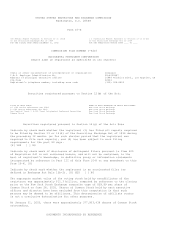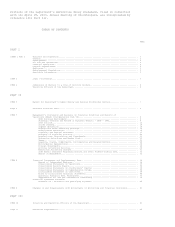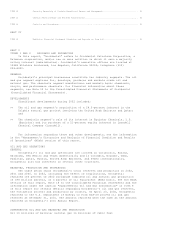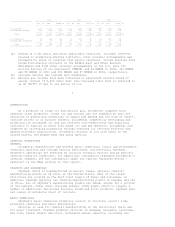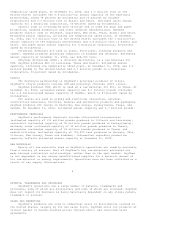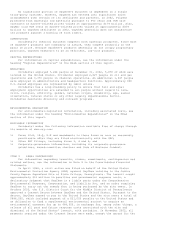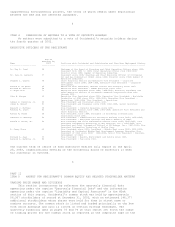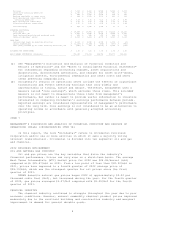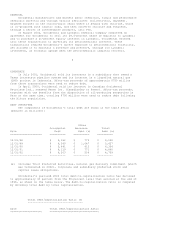Occidental Petroleum 2002 Annual Report Download - page 10
Download and view the complete annual report
Please find page 10 of the 2002 Occidental Petroleum annual report below. You can navigate through the pages in the report by either clicking on the pages listed below, or by using the keyword search tool below to find specific information within the annual report. Domestic chlorine demand improved slightly in 2002, compared to 2001 due to
the modest growth across all markets other than vinyl chloride monomer (VCM).
Despite modest growth in chlorine demand, prices remained strong and improved
significantly through the year. Strong chlorine prices resulted from a 5 percent
overall decrease in industry capacity and unplanned production outages. Caustic
soda prices declined through the second quarter due to a slow rebound in
downstream product demand, but improved in the fourth quarter as supply became
tighter. Polyvinyl chloride (PVC) prices improved reflecting the ability to pass
through price increases in feedstock costs as well as strong demand in building
and construction markets, resulting in some margin improvement.
STRATEGIC OVERVIEW AND REVIEW OF BUSINESS RESULTS - 2000 - 2002
STRATEGY
Occidental's overall corporate strategy aims to generate competitive total
returns to stockholders and consists of three basic elements:
>> Focus on large, long-lived oil and gas assets with growth potential.
>> Maintain financial discipline and strengthen the balance sheet.
>> Harvest cash from chemicals.
Large, long-lived "legacy" oil and gas assets like those in California, the
Permian Basin in Texas and Qatar tend to have moderate decline rates, enhanced
secondary and tertiary recovery opportunities and economies of scale that lead
to cost-effective production. These assets are expected to contribute strong
earnings and cash flow and serve as a strong foundation for new growth
initiatives.
At Occidental, maintaining financial discipline means prudently investing
capital in projects that are expected to generate above-cost-of-capital returns
from these investments throughout the business cycle. During periods of high
commodity prices, Occidental will use the bulk of its cash flow after capital
and dividends to reduce the volatility of its earnings either through debt
reduction or, to a lesser extent, by acquiring additional properties with
low-risk characteristics. Occidental may also sell properties to reduce debt and
to fund other higher-return acquisitions, while strengthening the balance sheet
to reduce risk and increase earnings.
The chemicals business provides free cash flow. From 1995 through 2002,
cash flow, after subtracting capital expenditures, from the chemicals business
totaled $3.0 billion. This does not include asset sales, net of acquisitions,
which provided an additional $1.0 billion.
SPECIFIC ACTIONS
OIL AND GAS
The oil and gas business strategy has three parts that, together, are
focused on adding new oil and natural gas reserves at a pace well ahead of
production, while simultaneously keeping finding and development costs among the
lowest in the industry:
>> Continue to add commercial reserves in and around Occidental's core areas,
which are the U.S., Middle East and Latin America, through a combination of
focused exploration and development programs.
>> Pursue commercial opportunities with host governments in core areas to
enhance the development of mature fields with large volumes of remaining
oil in place by applying appropriate technology and innovative
reservoir-management practices.
>> Maintain a disciplined approach in buying and selling assets at attractive
prices.
Occidental's oil and gas operations are located in California, Kansas,
Oklahoma, New Mexico and Texas domestically and in Colombia, Ecuador, Oman,
Pakistan, Qatar, Russia, United Arab Emirates and Yemen internationally.
Occidental also has interests in several other countries.
The asset mix within each of the core areas has been strengthened.
Occidental has sold properties with low or no current return and invested in
assets with higher performance potential. The results of these changes are
discussed below in "Business Review - Oil and Gas."

